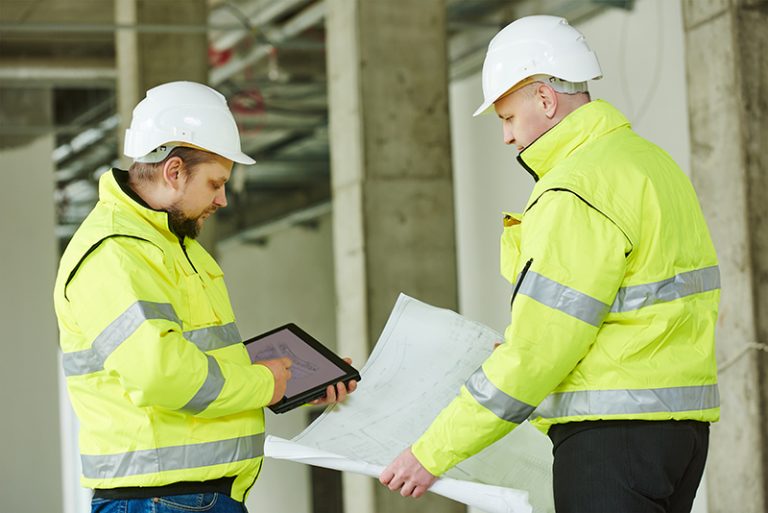
A 3-step Quick Start to a Higher Level of Building & Facilities Maintenance
Organizations’ buildings and facilities like utility plants, power & water distribution networks, parking lots and landscaping become more and more complex and expensive. That is why building & facilities maintenance is big business nowadays. It is one of the largest budget expenses and therefore always a target for cost cutting operations. However, facilities are major assets too and support continuously to operational performance and the realization of the corporate strategy. Organizing and managing your buildings and facilities as a successful “business within a business” is key to building & facilities managers nowadays. But what approach to follow? How to improve and where to start?
Here are 3 basic steps in getting to a higher level of Building & Facilities Maintenance:
1) Set the Asset & Maintenance Management Objectives
An important first step is to set the objectives for implementing or improving building & facilities maintenance by the Management Team. So that it is clear what you want to achieve, why it is urgent and that it is aligned with the organizational strategy. This will also result in buy-in of the management team to gain support and commitment for the implementation of maintenance improvement actions which probably will be needed to realise the objectives. Management commitment is important, because realising the objectives will require time and money. If necessary, you could detail the main maintenance objectives into sub-goals to make it more concise and practical, specifically because you might use the sub-goals to cluster the improvement actions which will come out of step 2. See figure below for an example.
In addition, step 2, the assessment of the current maturity (gap analysis) will be executed.

2) Assess the Current Maturity (Gap Analysis)
In step two, you assess the current level of asset management development of the organisation, preferably with a maximum mix of representatives at strategic, tactical and operational level of the organization. For the assessment, you may use asset management assessment methodologies which are available in the market from branch organizations like the Institute of Asset Management (www.theiam.org) and / or asset management consultancies. Important is that the assessment methodology is compliant with ISO 55000, the international standard on asset management. That means, that you use the ISO 55000 as a reference framework. Just in a few days’ time, you assess group-wise the current maturity level of the maintenance and asset management processes against the ISO 55000 reference framework. As a result, you have insight in the current asset management maturity of the organization.
To sharpen the result, you may carry out additional audits of specific processes or activities which, to your opinion, need further investigation. You could use internal auditors for this or external auditors, specialised in maintenance and asset management. The audits will normally be done through interviews. The interview results may lead to adjusting the assessment score at specific points (up or down). The final assessment results are regularly presented in a spider diagram, an example of which is shown in the figure below. The results of the gap analysis are summarized in the so-called current state report, which lists the assessment results on all ISO 55000 best practice levels for every asset management process.

3) Develop a Roadmap for Improvement and Get the Go/No Go
The results of the gap analysis will be the fundament for an improvement plan (the roadmap). We will determine what must be done to grow into maturity to a certain level which will contribute to the realisation of the required objectives (step 1).
The roadmap contains an overview of the possible improvement actions and a provisional first clustering in work packages. Each work package is linked to at least one of the asset management sub-goals.
If possible, a first estimation of the capacity (internal or external) and expected completion time is made; further also process owners (preferably MT members) and initiators (project leaders) will be assigned. The project leader having a work package or the remedial action does not necessarily have to execute the project himself, but he has to organize and monitor it. The process owner is ultimately accountable for ensuring that it is done within budget and time. Finally also priorities and dependencies within the set limits will be assigned, so that can be determined in which order and consistency the work packages will be performed. Everything should be finalised into an overall planning.
Additionally, to develop a business case for the implementation of the roadmap would be desirable. It makes clear what the involved costs and benefits of the implementation of the improvement actions will be and whether it is beneficial (enough) to the organisations. It will smoothen the decision making process.
The figure below shows an example of a graphical representation of a possible roadmap with work packages related to the asset management and maintenance objectives to be achieved.

The ultimate goal is to operate and maintain the building and facilities in an effective and efficient way, in order to integrate function, people and place. As strategic or tactical building and facilities maintenance decisions are often bounded by financial consequences and valuation effects, building and facilities maintenance professionals involved in tactical management of buildings & facilities need to be able to understand and foresee the consequences of their decisions in a broad sense. And a strategic roadmap for the implementation of asset management and maintenance improvements will be the perfect starting point for success.
In the training course “Building & Facilities Maintenance”, we discuss the quick start approach extensively and give you practical best practices to use. This PetroKnowledge course will be held in Dubai, an exciting place to visit and stay.
